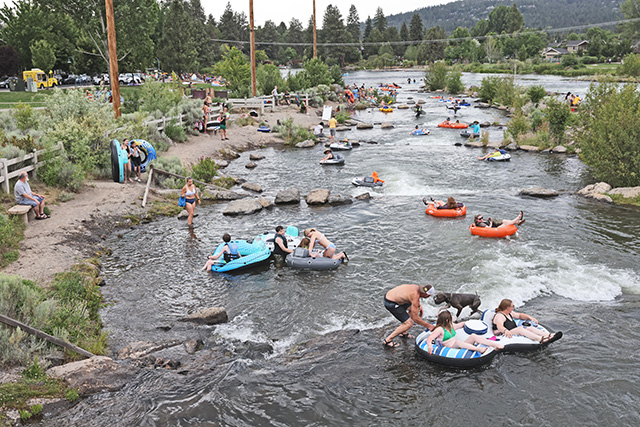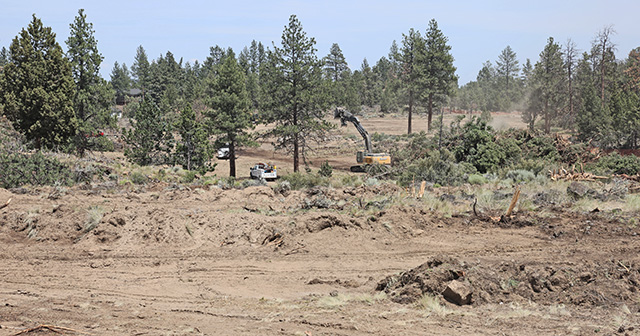More boomers are still working
Published 5:00 am Friday, August 2, 2013
Driven by a desire to stay active or a fear they may not be able to retire, Oregon’s baby boomers have been pushing the envelope when it comes to staying in the workforce . A new study from the Oregon Employment Department predicts this trend will continue for the next eight years.
“(Baby boomers) are more likely to work than previous generations did at their age,” State Employment Economist Nick Beleiciks said. “And their labor force participation rates have been increasing.”
According to the report, 67 percent of Oregonians between age 55 and 64 and 17 percent of those who are 65 or older were either working or looking for a job last year. These figures – which Beleiciks says measure the number of people who are working or “are trying to work” – are expected to continue to increase until they respectively hit 70.1 and 21.2 percent in 2020, according to the report.
Meanwhile, the labor force participation rates for the state’s youngest workers are expected to drop significantly over the next eight years according to the report.
The numbers
Beleiciks said labor force participation rates – calculated by combining the number of people who have a job with the number of people who are looking for a job and dividing that by the general population – can serve as a barometer of a region’s economic health.
High participation rates signal a strong economy because they mean lots of people have a job or have enough confidence to find work. Low rates, on the other hand, signal a weak economy where fewer people are working and those who don’t have a job have grown disenchanted with their search, are living with less income or are going back to school to get more skills.
Labor force participation rates for Oregon and the U.S. climbed steadily from the mid-1960s to the late 1990s. Beleiciks said this had a lot to do with women entering the workforce, a slow but steady period of economic growth and the boomers creating a huge demand for goods and services.
But things changed 10 to 15 years ago when, fueled by better technology, workplace productivity increased and the country began to switch from a labor-heavy manufacturing economy to one that is focused on the service industry. Beleiciks said this meant there were simply fewer jobs to go around – a situation that was only made wore by the economic downturns of 2001 and 2007.
According to the employment department report, the labor force participation rate for Oregonians older than 16 climbed from 63 percent in 1976 to its peak of 68.9 percent in 1998. From there it fell to 65.7 percent in 2005 and 63.4 percent in 2012. This rate, which is the country’s 31st highest and has mirrored the national rate in its up and downs, is expected to fall another 2 percentage points before it hits 61.2 percent in 2020.
But the state’s oldest and youngest workers are going to be making this transition in different ways.
Old vs. young
According to the report, workforce participation rates for people between 55 and 64 have risen from 57.1 percent in 2000 to 67 percent while those for people who are 65 or older have risen from 11.9 percent to 17 percent.
“People are getting more productive as they get older,” he said, explaining that the switch from a manufacturing-based economy to a service-based economy dramatically decreased the physical stress associated with working and made it easier for people to stay in the labor force longer.
During the 1980s, he said, many employers also switched from offering their employees a defined benefit or pension plan for retirement to offering a defined contribution plan or 401(k). This meant fewer people could retire when they were 55, the age at which most pension plans pay their benefits, and so they were forced to stay in the labor force until they qualified for Social Security or had saved enough money to retire.
And while older workers are delaying the age they leave the labor force, he said, younger workers are delaying the age at which they start it.
According to the report, the labor force participation rate for people age 16 to 19 fell from 56.9 percent in 2000 to 36.5 percent in 2012. The participation rates for those age 20 to 24 fell from 82.1 percent to 73.3 percent.
“Young people are less likely to work (today than in the past) because they are doing things like school, sports or an activity to help them get into college,” Beleiciks said. Younger people are also more likely to stay in school longer, which further delays their entrance to the labor force, he says.
Beleiciks said a common complaint from younger people is that they can’t find a job because so many of them are being tied up by older workers. Older workers often respond to this complaint by saying they wouldn’t have to work if the younger people had a job and could support themselves, he added.







